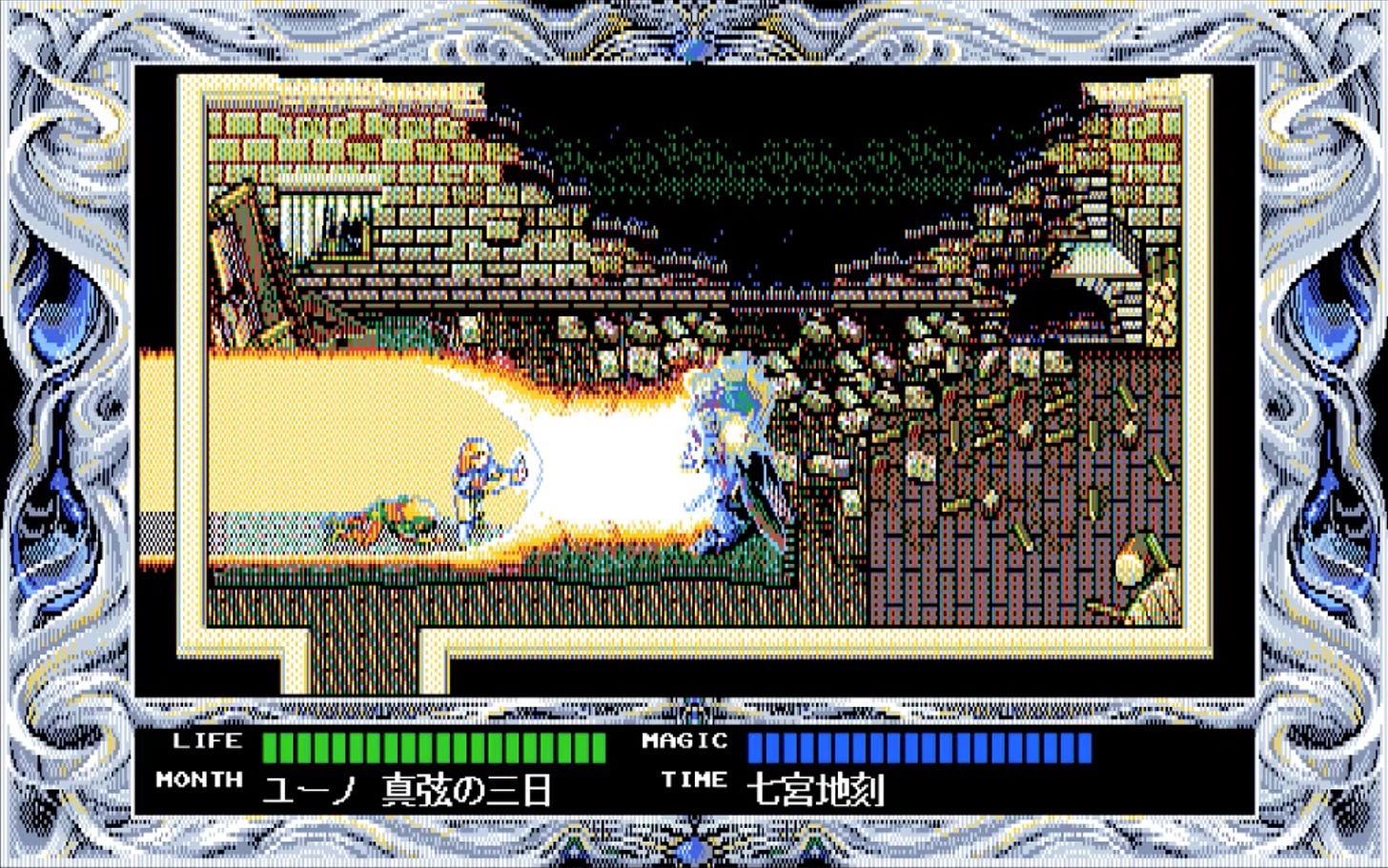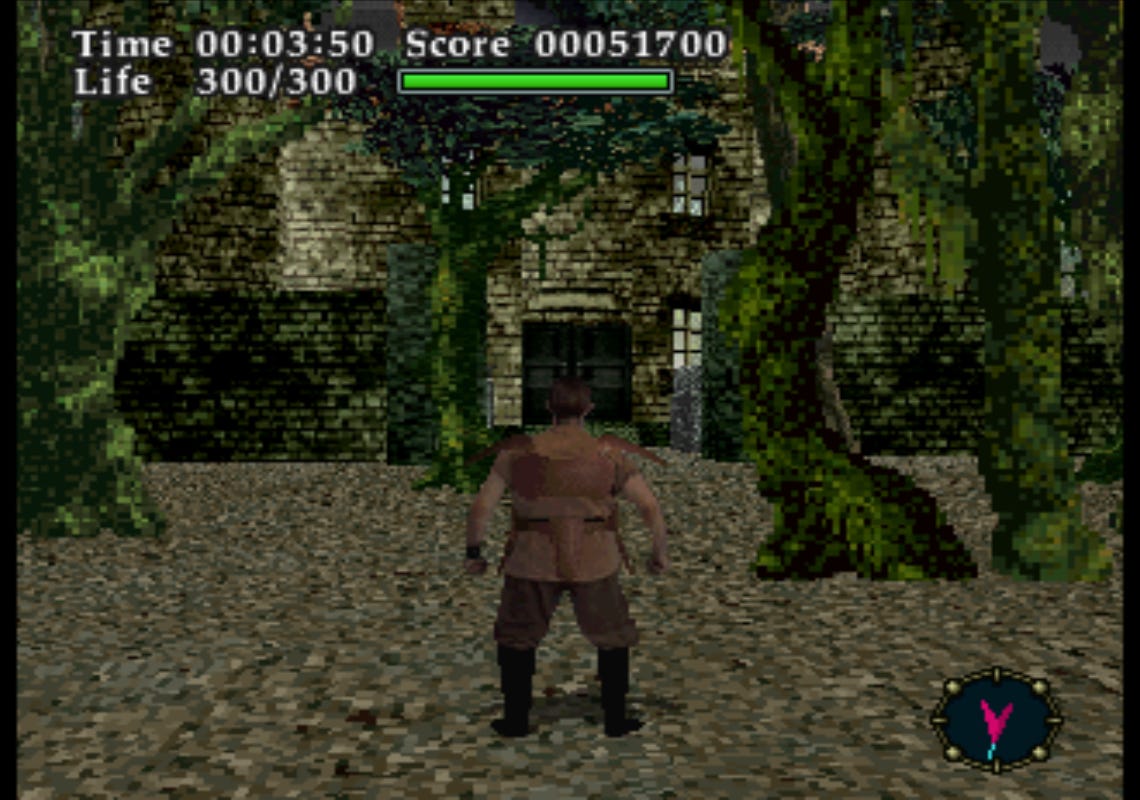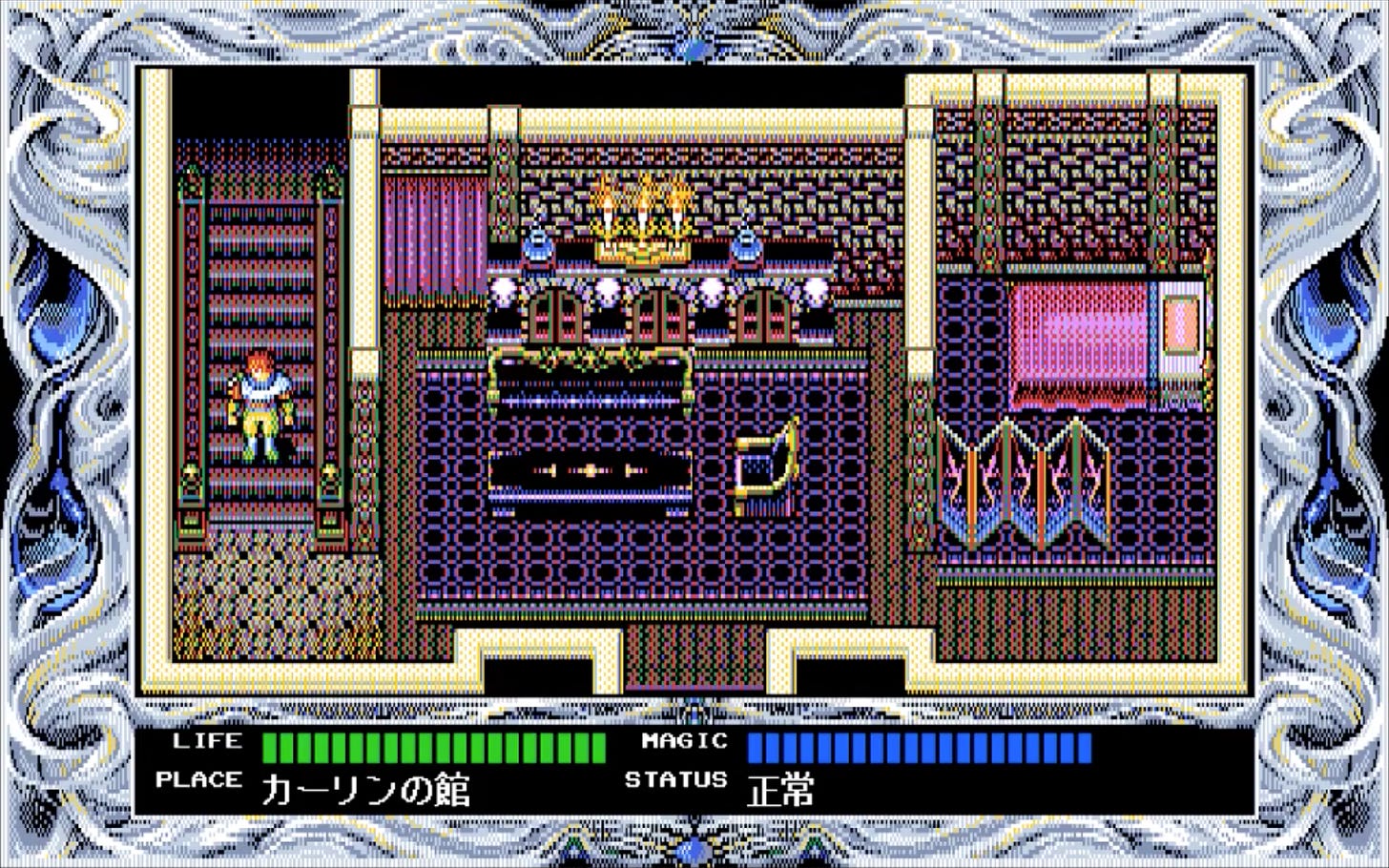Loomed and Glimmering || Rune Worth 2 & 3
A short look at the Japanese PC-98's graphical qualities by way of two games
N.B.: this post originally appeared on my Brick By Brick blog in 2021.
Most English-speaking people today who are aware of videogame developer T&E Soft only know of them through two titles: the first Hydlide (specifically the, by 1987, dated and inferior NES re-release) and Virtual Hydlide. Both of these have acquired an exaggerated notoriety. This reception has been at least partially encouraged by e-personalities enforcing strict, industry-appealing qualitative notions, and often emphasizing mocking negativity. It’s better, or more accurate, to see Hydlide in its PC-6001/PC-88 context as an innovator of the action-adventure-RPG genre, and the influence for the first two Ys games’ format. It is also little-known that Ys III: Wanderers from Ys was modeled on the design of Tritorn 2, a game by developer Sein/Xain/Zain Soft. It even copied some of the settings!
Understood as such — compare the PC releases of Hydlide to, e.g., the original Dragon Slayer, also released for the PC-88 in 1984 —, we can also begin to understand Hydlide’s popularity as a consequence of something more than millions of Japanese citizens being deprived and deluded and settling for the lowest of the low in their entertainment. Virtual Hydlide is noteworthy, too, as a strange and perhaps unique attempt at crafting a lightly randomized, score- and time-based 3D arcade game for a home console using the overworld + dungeon crawler format. Its most significant downside is a miserable frame rate. I get why this would put people off from playing it, especially since it’s always conflicted with the design’s speedrun-like emphases. But if this were the worst thing you could knock a game for, the medium would be specially positioned among all others for a minimum of faults (hint: it isn’t).
Above: screenshots from Virtual Hydlide.
With that preamble out of the way, I’d like to bring unaware readers’ attention to Rune Worth 2 and 3, released for the PC-98 in 1991. As usual, if your only resources on the English-speaking Internet for videogames are Wikipedia and MobyGames, you would probably never know about either of these (Wikipedia cites the first Rune Worth (1989) for the MSX, but says nothing of the sequels; MobyGames does not even cite the former). The Rune Worth series was, by all appearances, T&E Soft’s successor to Hydlide, and while it is formally organized as a trilogy, the three-months-gap between the second and third installment’s release, their discounted price, and the way in which 3 picks up right where 2 leaves off (to the extent of being able to transfer your character data from one to the other), means that, really, there are two full entries. Much of this information was laid out on a dedicated stream for both these games by Macaw45, who has dedicated years to researching, cataloguing, and exposing people to lesser-known videogames. If you can’t read Japanese, or just don’t want to play the games yourself, the embedded video would be your best bet for seeing them in action.
There are many things to say about Rune Worth 2/3 – the dramatic introductory sequence preceding the main menu; the luxuriant sprawl of its public spaces (one can, for example, go out to the first castle’s rooftop, partitioned into a little pseudo maze, despite no requirement for doing so); its equal emphasis on setting, story, and action — but I want to emphasize how amazing these games look. Even from a distance, many PC-98 games have a distinct and highly abstract composure; and, looking at them up close, where the unlikeliness of certain chromatic and textural decisions make themselves known, it’s a wonder over and over again how representation emerges from what I described in a post about Super Hydlide as “an ornate and time-worn carpet.” The resemblance to a tapestry is especially obvious with Rune Worth 3 and its faded floral border depicting a grape vine. The overall visual splendor of these mosaics on a PC-98 monitor would, of course, be all the subtler and greater.
Above: screenshots from Rune Worth 2.
Above: screenshots from Rune Worth 3.
Over time, a handful of early- to mid-90s Japanese PC videogames have gotten more exposure in the West as the consumption of anime and nostalgic sentiment have grown hand-in-hand (not infrequently with neurotic developments). The bulk of these have tended to be of the visual novel/eroge type. YU-NO: A Girl Who Chants Love at the Bound of this World, released in 1996 for the PC-98, is a particularly popular example, in part because of its soundtrack by Ryu Umemoto. For me, the in-game artwork for these titles can be technically commendable, but is otherwise not very exciting.
When I look at Rune Worth 2 or 3, it sometimes reminds me of looking at artist Kathleen Ryan’s beady sculptures of rotting fruit and marveling at the surprising vibrancy and coloristic range within putrefaction: the intersection of the beautiful and ugly, and its fructifying of the grotesque. This extends to a number of PC-88 titles too, like Sorcerian (Falcom, 1987) and DIOS (Zain Soft, 1989). In some cases, there is a remarkable convergence of visual grit/granularity and fidelity, maybe exemplified best of all by the PC-98 release of Xak III: The Eternal Recurrence (MicroCabin, 1993). But even there I find myself missing the marvelous polychromaticism of these two Rune Worth titles. The intention for, say, Super Nintendo games to be played on TVs of the time has never been an impediment to contemporary indie developers mimicking their look for modern LCD monitors. Even if it feels unlikely, then, I wonder if we will one day see a small revival of that fibrous, loom-woven PC-88/PC-98 look.













